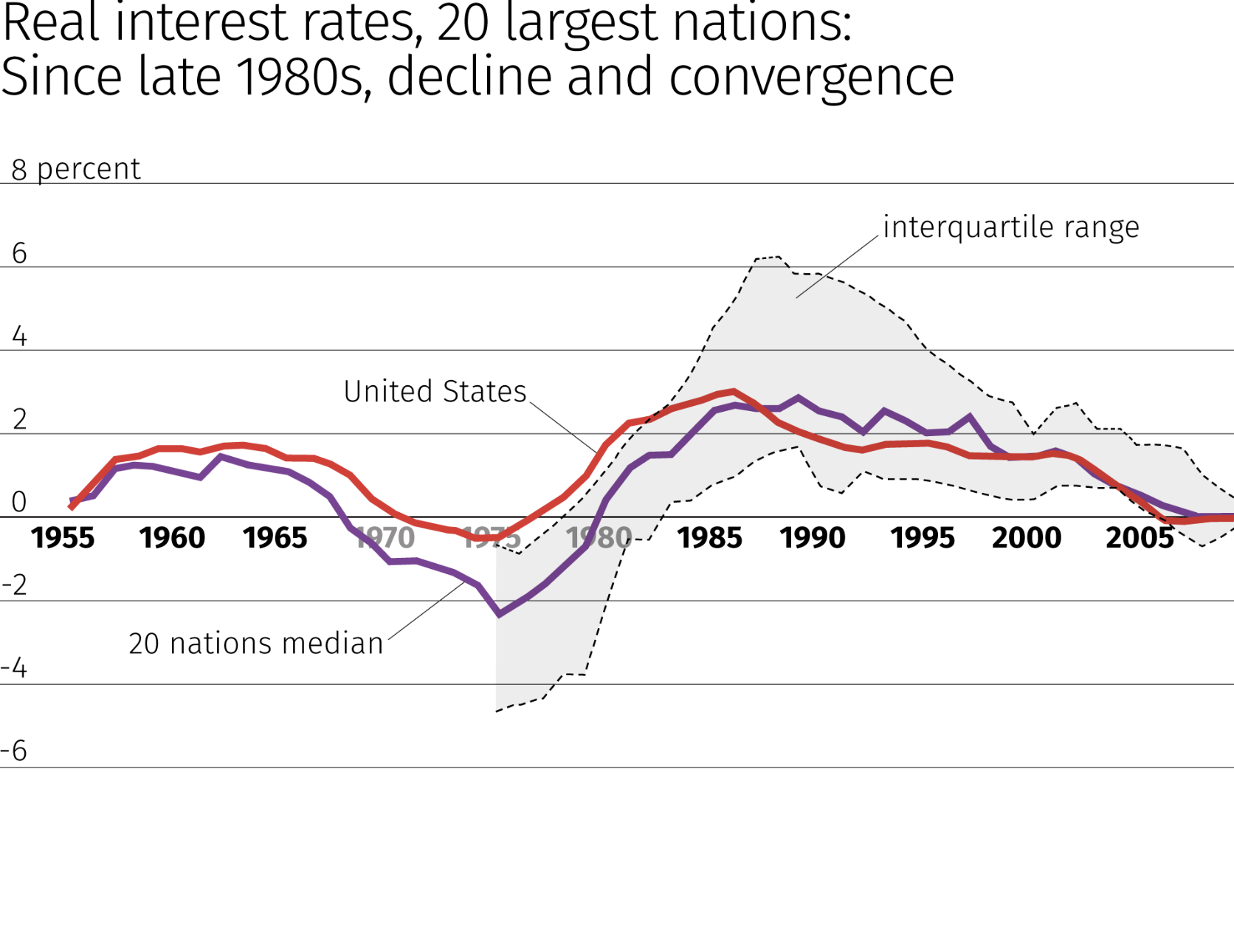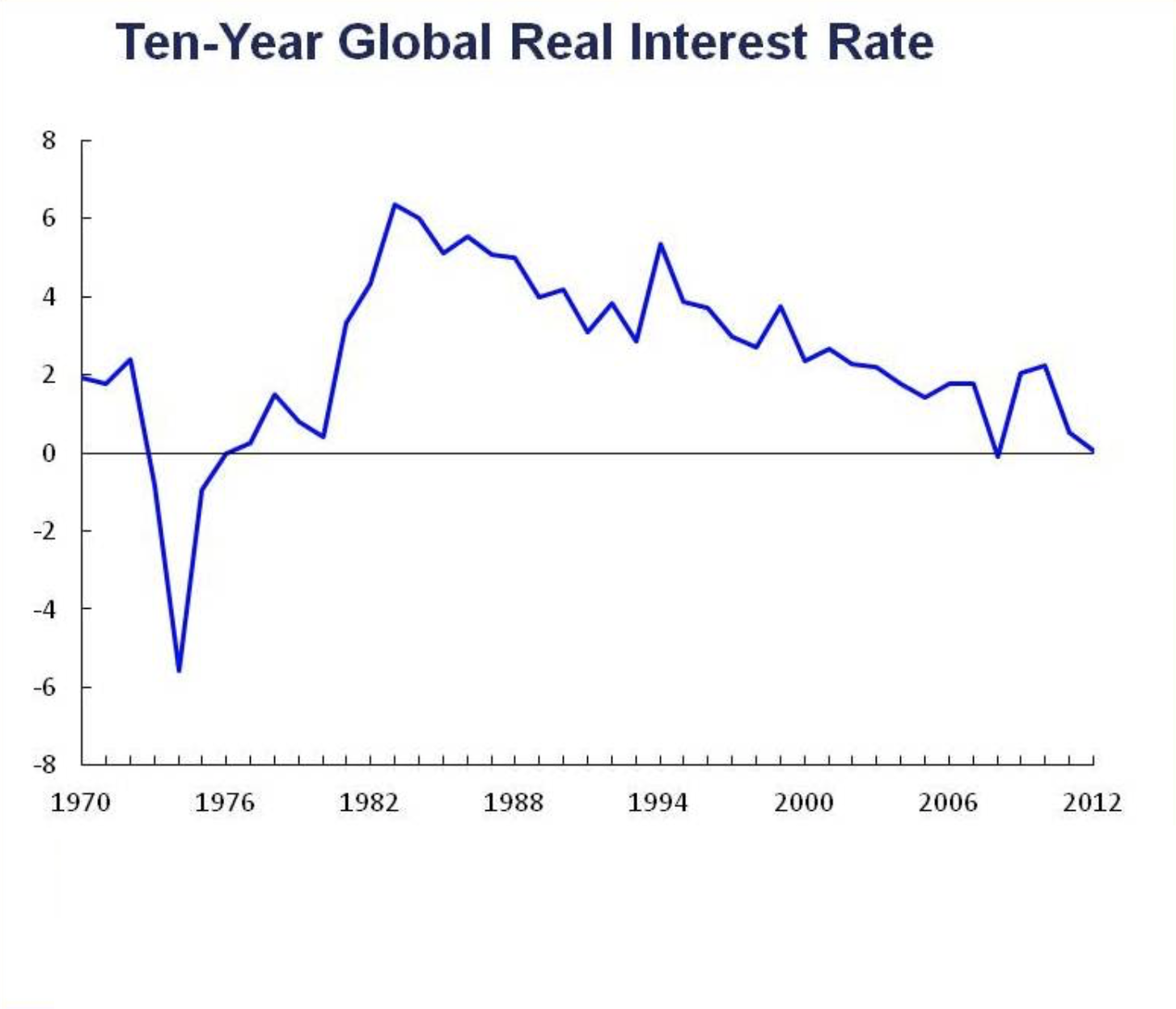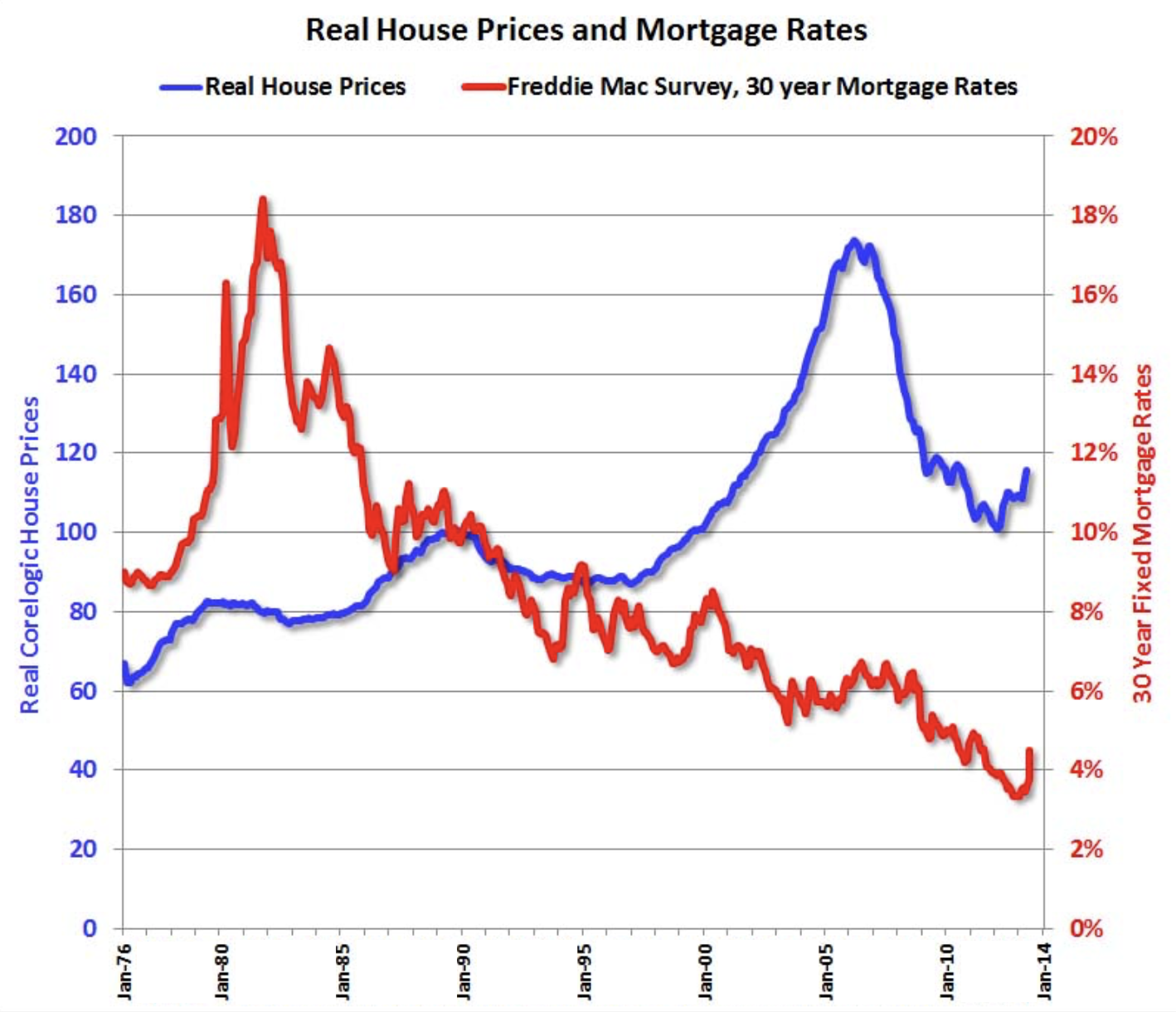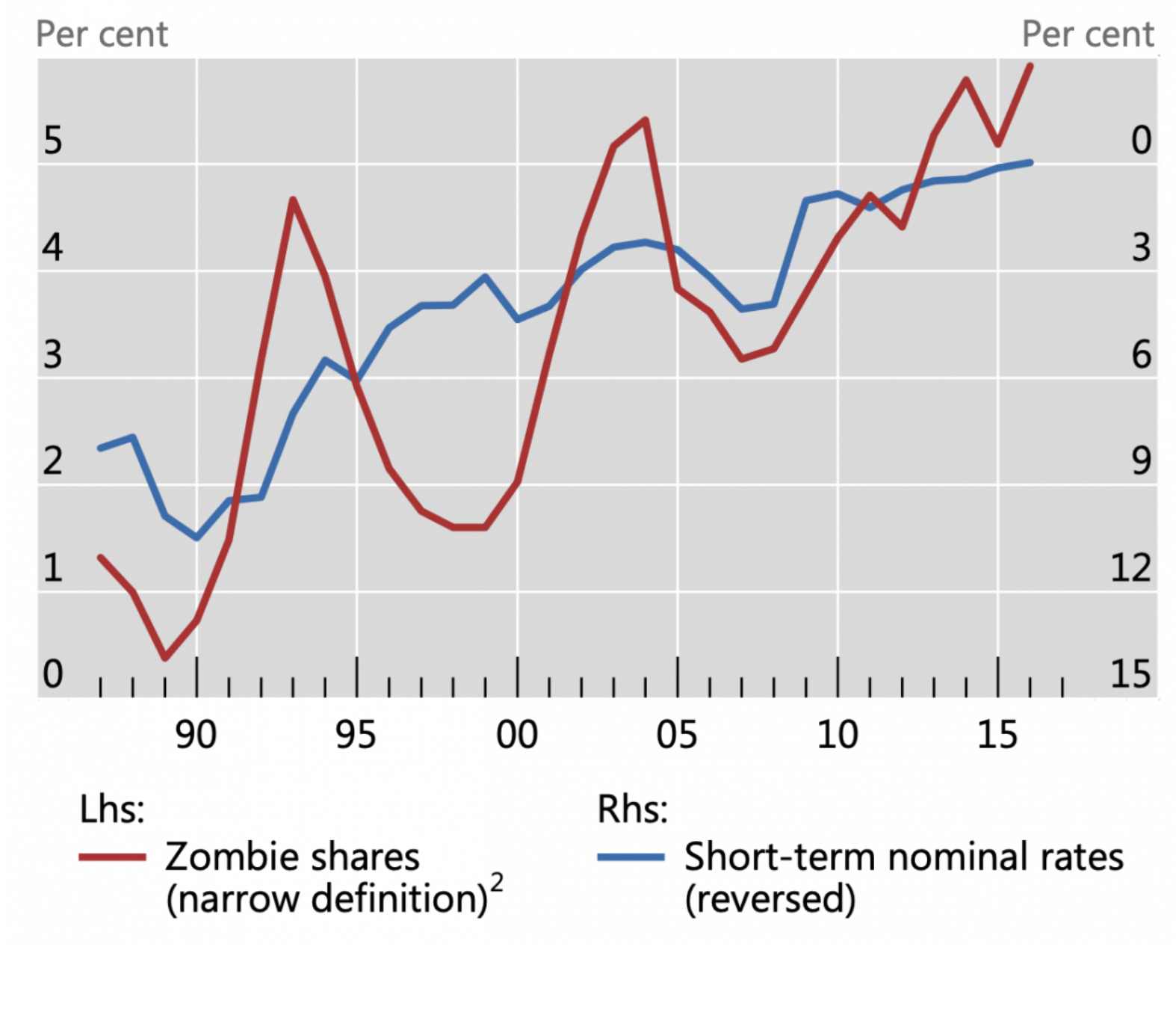All money is a matter of belief.
By a continuing process of inflation, governments can confiscate, secretly and unobserved, an important part of the wealth of their citizens.
In the economy of the cuckoo people that populate central banks, everything is possible. What you have is gigantic bubbles.
In addition to fiscal policy, states exert control over the supply of money and the prevailing rate of interest through central banks. For more than 40 years, central banks in the developed world have made containing inflation a top priority, and have largely succeeded. They have been helped in this task by globalization, trade, and immigration, all of which have helped to keep the prices of consumer goods and services from swelling too greatly. But low inflation has had side effects: It benefits wealthy lenders at the expense of producers and borrowers, and it has made government debts more burdensome, further constraining the capacities of states to enact fiscal policy. It is time for the central bankers to reassess the way they wield their wizardry. As we shall see in the next chapter, they were the only ones left who could have staved off the last crisis, and even their awesome powers have been fading.
THE MAGIC OF MONEY
Money is little more than an ingenious collective delusion that facilitates exchange in time and space. A public good of the mind, it is fundamentally immaterial, even if it can be ascribed to a material support, for it has no existence of its own except in the collective cognizance. A virtual reality, it only exists because we all agree to pretend it does.
Despite its fundamentally immaterial nature and deceptive essence, it is one of humanity’s most essential inventions. It is the metric of finance, the measure by which we save, consume, and invest. It is what allows us to indirectly but tangibly transfer resources among us, but also to defer consumption, allowing unconsumed resources to be invested and to create future growth in the process by collectively funding capital goods.
It is the oil that lubricates economies, and the glue that holds together societies. It is of critical importance, but also very fragile. If the collective faith in its legitimacy is undermined, the illusion of its existence may be compromised and collapse. Money can best be understood as a form of religion, in that it allows for an improved outcome for all, changing behaviors and making things possible that would not be possible otherwise, all on the simple yet critical basis of faith. Like any religion, it has its guardians of the temple, the central bankers. While seemingly all powerful, its potency uniquely depends on the intensity of the faith of the believers. If its adherents flock to other faiths (i.e., other forms of currency) or become agnostic (put their resources into real assets), it loses its value.73
The guardians of the temple regularly have to intervene to conjure and channel the power of money. With the liturgy of central bank gatherings, mundane affairs deliberately shrouded in mystery, they make money more or less abundant, more or less expensive. They change the interest rate and the amount of currency in circulation depending on what they deem to be “good,” which varies with circumstance. Oracles of the economy, they see into the future and interpret the tea leaves of the economic forecast, making sometimes unintelligible comments that affect market prices depending on the prevailing interpretation of the last utterance, as if they held some magic power. Once upon a time, these guardians of the temple, were unglamorous technocrats – low-profile, highly skilled civil servants. They have had quite a run since the stagflation crisis of the 1970s, achieving their place as putative demigods, tasked not only with explaining to the commoners the intricacies of economies, but with being omniscient, to foretell and to safeguard our economic futures. Indeed, with growing regularity, they perform apparently costless miracles by creating money ex nihilo, salvaging economies from recessions, and making the faithful (or at least the wealthiest among them) seemingly better off.
As always through, power, once given, can be hard to use sparingly. This is a problem, because money’s immaterial existence in the collective mind relies on trust, and in particular on trust that it won’t be abused. History has shown again and again that the powers in charge of money end up abusing the instrument, with grave political consequences. Printing money in excess creates seigniorage, a claim on economic resources that is not derived from reducing today’s consumption but is, instead, based solely on the trick of money printing. This runaway money printing debases the currency, putting more money in circulation for the same economic pie of goods and services. The issue with the ex-nihilo creation of wealth through seigniorage is that there is no production of an economic activity by the state, government or central bank, or by commercial banks,74 that corresponds to the value of the new money issued. These institutions gain claims on the economy’s production only by producing money out of thin air.
In order to insure price stability, money must be created – or destroyed – to accommodate changes in both the size of the economy but also in the speed at which we transact, which is known as the velocity of money. Monetary policy controls the supply of money to account for these factors and maintain reasonable price stability. Producing money in line with economic growth assures price stability, for, as the theory goes, the amount of money available per unit produced in the economy remains the same. That is, provided the speed at which the money is used is constant, an increase in the money supply commensurate with economic growth will maintain price stability. This requires great skills as a misjudgment has severe consequences.75
Here’s the bad news: The track record of economists and central bankers in predicting the future evolution of the economy, or even understanding its present state, is poor at best.
“Economists are criticized for not being able to predict the future, but, because the data are incomplete and subject to revision, we cannot even be sure what happened in the recent past,” former Federal Reserve Chairman Ben Bernanke once confessed.76
So how did the central bankers gain such an aura? The answer lies largely in two developments. The first is the over-financialization of the economy, which gave central bankers excessive short-term power via their mandate to set interest rates. The second is states’ abdication of fiscal policy, victim of its excessive use, which has left monetary policy as the only game in town. In other words, central bankers became the only actors whose actions, justified or not, correct or not, mattered not only to markets but to the economy at large.
The central banks have several ways to exert monetary policy. Predominantly, they can decrease or increase interest rates. They do this by changing the rate at which they accept deposits, or by buying or selling bonds (open market operations). The former is an indirect, the latter a direct, way of creating money. Higher interest rates will attract more deposits, which will mean more money is returned – or “sterilized” in the central bank jargon – and therefore taken out of circulation.
Another way central banks exert monetary policy is to act on banking system leverage by changing the propensity of financial intermediaries to create money through the multiplier effect. This can be done, for instance, by changing the capital requirements for banks to make loans, changing the risk ratio of their capital, or even by making a set of more complicated or easier compliance issues to take in deposits. All of these will in practice affect the multiplication of money done by the financial sector.
In order to boost the economy, traditional central bank policy, referred to as “orthodox,” has been to lower interest rates, directly or indirectly. And when the economy overheats, and inflation starts occurring, orthodox policy calls for increasing interest rates.
FROM INFLATION TO DEFLATION
After the oil shock and the inflationary boost of the ’70s, monetary policy initially took a tight posture. This led to a disinflationary period that started in the ’80s. The decrease in inflation has had multiple components that made the phenomenon structural in nature.
To start, the end of the Cold War and the integration of Russia and China into global markets and trade networks brought tremendous commodities and industrial capacity into the global economy. This meant that while these regions eventually became new consumers, they more rapidly became net producers, at low or very low costs. This occurred directly though the export of cheaper commodities and products. It also occurred indirectly by opening new sources of competition, notably on low-end labor. This created enormous downward pressure on market prices and thus on inflation. In other words, when everything is getting cheaper – think $2 socks made in China at Wal-Mart and call center employees in India making a fraction of Western wages – you won’t get inflation.
This tendency has been accentuated by globalization. Lower transport costs for goods and new means of delivering services from abroad, along with lower tariffs and barriers to entry, all increase competition and keep prices low.
Labor, a critical input in the final price of goods and services, became cheaper with a de-unionization trend and the immigration of low skill workers. This empowered employers and resulted in stagnant wages.
Lastly, the lack of fundamentally new demand for new products, but increased efficiency at producing existing products, through automation and computerization, has also exerted downward price pressure. The Kondratieff cycle reflects the idea that, as inventions become innovation, we enter into phases of new products that generate new demand. This is followed by a period of consolidation when we no longer have new products, but we are getting much better at producing existing products for all. All signs indicate we are very much in this final phase of the cycle.


WINNERS AND LOSERS OF DISINFLATION
What is critical in our context is that the decrease in inflation, which brought with it a reduced need for price adjustments and thus transaction costs, has inherently favored rent holders over producers and facilitated both wealth concentration and an increase in long term government debt.
Inflation is a form of wealth “tax.” It erodes away the value of money over time, meaning that $100 today, if it sits around as money and is not invested, will only buy you, say, $70 worth of goods if you spend it in say, five years. Similarly, fixed payments over time lose their purchasing power. Money that is invested in “real”’ investments tends not to lose value, as the price of the goods and services produced can adjust over time. In essence, increasing inflation is bad for holders of debt, through the simple fact that the debt principal that will be reimbursed (and often the interest) will be worth less in real terms by the time the borrowers pay it back several years later.
Inflation, and changes in inflation, also create adjustment problems, as different economic actors will attempt to adjust the prices of their goods and services in accordance with it. This is a major transaction cost, as the ability to rapidly adjust prices will affect producers’ gains or losses regardless of the real economic value of their output. As a general rule, those producing real value will however be able to impose price increases, even if the mechanics of this process may get messy, for example by requiring labor strikes. At the opposite end, those benefiting from rent without producing, such as retirees, will typically be unable to adjust, or able to do so only belatedly. Deflation favors rent extractors and makes it harder for workers to impose adjustments.
Inflation is typically a source of income for the money issuer, as more money is needed for the same economy. It is thus a source of seigniorage, or tax power from the creation of money, for the government. Furthermore, in an accelerating inflation, the government will make further gains from the negative real interest rate on its debt, the same mechanism that benefits private borrowers. That is the “real” value of its obligations decreases, so the debt decreases.
In reality, we have seen lower inflation. This reduces interest payments, improving short term government cash flow, but fundamentally makes the debt stock more valuable. It makes the government debt larger in real terms.
As reduced inflation has increased the attractiveness of debt, it favored an increased debt ratio all over the economy. This essentially became a factor in creating credit bubbles, as debt has come to be perceived as a more attractive instrument relative to capital. It also sustains companies that should otherwise have gone bankrupt long ago.
Lower inflation, with increased debt financing, has also played a critical role in the increase in value of real estate. While real estate, as a “hard asset”, is often perceived as an inflation hedge, its value is determined by the ability of buyers to pay a price, what is referred to as affordability. With nominal interest rates lower and long-term debt easier to access, lower inflation automatically makes it easier to finance real estate acquisitions, and therefore drives up real estate prices. This illustrates perfectly the problem of decreasing inflation, as it has meant the same economic goods (e.g., houses) have become more expensive as people could borrow more to pay for them. This monetary policy induced repricing favored homeowners, who had not done anything to warrant such an increase in the value of their assets.
So, while the temporary effect has contributed to social stability, long-term monetary trends have fed the underlying drivers of populism. On the one hand, it has rendered workers unable to “reprice” their labor and participate in the gains of globalization. At the same time, it has heightened the perception – and reality – that wealth is being preserved, and compounded, over time. Indeed, real interest payments by states have increased on their no-longer-diminishing debts, while states have been unable to reduce pension payments, all of which has led to unsustainable increased tax pressure on workers.


SHOULD WE AIM FOR LOW INFLATION?
This leads us to ask if deflation is a bad thing. Central banks, most publicly the European Central Bank, have set an inflation target of 2%. The idea of a low single digit inflation target is that it generates just enough wiggle room to allow for painless shift in real wages, and not too much price movements that would engender social discontent.
There are however several problems with this. To start with, measuring inflation is far from a precise science, no matter how many decimal places the estimated figure is calculated out to. It involves creating a basket of goods and tracking the total price of the goods within that basket. However, the goods in the basket can change over time, as new products like automobiles and computers become common purchases and other products like VCRs become obsolete. The quality of the goods in the basket can change as well, making it difficult to determine how much of a nominal price increase on a product is due to the newest version’s higher quality and how much is due to inflation. We might buy more TV screens now than before, but we no longer buy black and white TV screens. Given the inherent uncertainty in measurement, it is questionable whether precise inflation targets should be used at all, let alone whether extraordinary measures should be taken to hit those targets exactly.
There have been times when price have been going down while the economy was enjoying sustainable growth. These were not by any means dark periods of history. Indeed, they balanced out other periods of high inflation. This is important because inflation, just like deflation, alters wealth and income distribution. Inflation typically hits the fixed income debt holders and the people benefiting from annuities or fixed rent who cannot adjust. It is bad, for example, for vulnerable retirees. Deflation is similarly a repricing that would favor some over others but is not negative per se.
It is argued that deflation can lead to a dangerous cycle, with a drop in price generating another drop and so on. This would put in danger the financial system, and in particular banks, which have been lending on increasingly leveraged terms on assets that would lose in value. There is certainly some truth in that, as a financial crisis would have social costs77. Yet it is somewhat doubtful that extreme measures to move inflation at the margin do not themselves generate problems78. Such a scenario indeed occurred during the financial crisis, when central banks rightly recognized that a financial meltdown could take place and that there was a liquidity crisis. Following this, central banks pursued monetary creation on an epic scale, tripling the amount of money available and injecting it into the financial markets, largely through government bonds and other financial securities purchases.